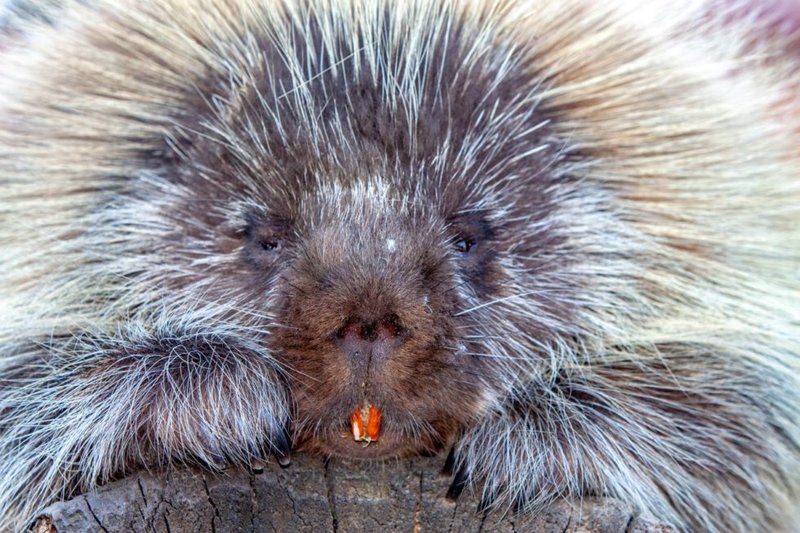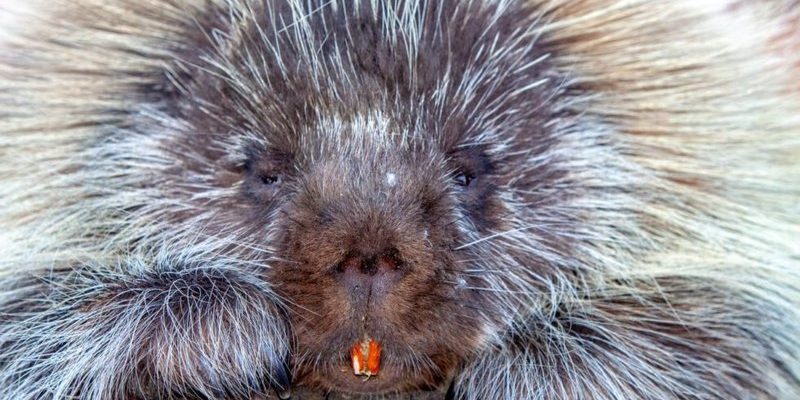
In this exploration, we’ll look at different types of porcupines, their habitats, threats to their survival, and conservation efforts around the globe. Armed with insights, you’ll see just how important these creatures are to our ecosystems and what we can do to protect them. So, grab your coffee, and let’s dig deeper into the prickly yet charming life of the porcupine!
Understanding Porcupines: A Quick Overview
Before we dive into whether porcupines are endangered, let’s talk about what they are. Porcupines are large rodents known for their coat of spines, or quills, that they use as a defense mechanism. These unique animals belong to two main families: the Erethizontidae (New World porcupines) and the Hystricidae (Old World porcupines).
Here’s something interesting: did you know that porcupines can be found on nearly every continent? They thrive in a range of habitats, from forests to grasslands. In North America, the most common species is the North American porcupine. This critter is mostly nocturnal, which means it’s active during the night, munching on leaves, bark, and even fruits. Talk about a midnight snack!
Understanding these basics helps us grasp their ecological role. Porcupines contribute to their ecosystems by eating tree bark, which can help trees thrive by controlling growth. They also provide homes for various insects and birds when they burrow. So not only are they cute, but they’re also crucial players in their habitats!
Current Status: Are Porcupines Endangered?
Now, onto the big question: are porcupines endangered? The short answer is no, but it’s not that simple. While the North American porcupine, for instance, is not currently considered endangered, other species, like some African porcupines, face serious threats.
Conservation status is determined by organizations like the IUCN Red List, which evaluates species based on their population trends and threats. Some porcupine species are listed as *Least Concern* while others are categorized as *Vulnerable*. The key takeaway is that not all porcupines share the same fate, and it’s essential to look at each species individually.
You might be wondering why certain porcupines are at risk. Well, factors like habitat destruction due to agriculture, deforestation, and human encroachment are major challenges. In some regions, hunting has also contributed to declining numbers. So while some porcupines are doing just fine, others urgently need our help to survive.
Habitat Loss: A Major Threat
Habitat loss is a significant concern for porcupine populations around the world. As human populations expand, forests and natural areas shrink. This is particularly true in regions where agriculture or urban development takes over.
When porcupines lose their homes, they struggle to find food and shelter. Imagine if your favorite park was closed for development; that’s the kind of impact we’re talking about! In addition to losing physical space, porcupines must also compete with other animals for dwindling resources.
One way this affects porcupines is through fragmentation. When large habitats are broken into smaller patches, it creates barriers that make it harder for animals to find mates. This can lead to isolated populations that struggle to thrive and reproduce. In short, habitat loss doesn’t just affect where porcupines live; it impacts their survival chances too.
Climate Change: An Emerging Concern
Climate change is another player in the threats facing porcupines. As temperatures rise and weather patterns shift, the ecosystems that porcupines depend on may change dramatically. Plants that porcupines rely on for food might not thrive, causing food shortages.
Here’s an example: if a porcupine’s preferred trees are affected by drought, it may have to find a new source of food. This can be particularly daunting for a critter that has a specialized diet. Plus, changing weather can disrupt their breeding cycles, making it harder for young porcupines to survive.
Moreover, extreme weather events caused by climate change, like heavy storms or wildfires, can destroy significant parts of their habitats. So, while porcupines aren’t listed as endangered globally, climate change could change that if we don’t take action now.
Conservation Efforts: Protecting Porcupines
While the news might seem daunting, there are many conservation efforts underway to protect porcupine populations. Organizations and governments are actively working to restore habitats and create protected areas where porcupines can thrive without human interference.
One example is the establishment of national parks and wildlife reserves. These areas are crucial for conservation because they provide safe havens for wildlife. In these protected zones, animals, including porcupines, can roam freely and find food without the threat of habitat loss.
Community education is also a key effort. By informing locals about the importance of porcupines in their ecosystems, communities can become advocates for their protection. Workshops, school programs, and local campaigns help spread awareness and encourage sustainable practices. After all, if people understand why porcupines matter, they’re more likely to support conservation efforts.
How You Can Help: Simple Steps for Conservation
You might be thinking, “What can I do to help porcupines?” Thankfully, there are plenty of ways you can pitch in, even from the comfort of your own home! Here are a few simple actions:
- Educate Yourself and Others: Share information about porcupines and their role in the ecosystem. The more people know, the more they can help.
- Support Conservation Organizations: Donate to or volunteer with groups that focus on wildlife conservation. Every little bit helps!
- Be Mindful of Your Habits: Reduce your carbon footprint to combat climate change. Simple changes like using less plastic or recycling can make a difference.
- Advocate for Local Conservation Policies: Contact your local representatives and express support for protecting natural areas and wildlife.
It’s all about raising awareness and making small changes that contribute to a larger impact. Remember, porcupines have been around for millions of years; we should do our best to ensure they have a future in the wild.
The Bigger Picture: Biodiversity and Ecosystem Health
When discussing whether porcupines are endangered, it’s vital to think about how their survival ties into the broader picture of biodiversity. Every species, including porcupines, plays a role in maintaining the balance of the ecosystem. If one species declines, it can set off a chain reaction affecting others.
Porcupines help shape forest environments by consuming certain plants and trees. In turn, this encourages biodiversity by allowing other species to thrive in a healthy habitat. So, protecting porcupines isn’t just about saving them; it’s about preserving our ecosystems.
It’s clear that the fight for conservation is crucial, not just for porcupines, but for all living beings. We need to remember that every creature has its place in the intricate web of life, and losing one thread can unravel many others.
In conclusion, while porcupines are not universally endangered, many species face significant challenges. By understanding the threats they face and supporting conservation efforts, we can help ensure that these charming, spiky friends continue to thrive in the wild for generations to come. Together, let’s protect the porcupine and its ecosystem—because every quill counts!

